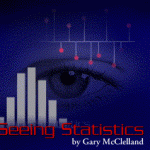curso de KNIME
Posted by Armando Brito Mendes | Filed under mapas SIG's, materiais para profissionais, software, videos, visualização
Muito bom curso de KNIME, é introdutório mas introduz um grande número de funcionalidades.
KNIME Online Self-Training
Welcome to the KNIME Self-training course. The focus of this document is to get you started with KNIME as quickly as possible and guide you through essential steps of advanced analytics with KNIME. Optional and very useful topics such as reporting, KNIME Server and database handling are also included to give you an idea of what else is possible with KNIME.
- Installing KNIME Analytics Platform and Extensions
- Data Import / Export and Database / Big Data
- ETL
- Visualization
- Advanced Analytics
- Reporting
- KNIME Server
Tags: análise de dados, big data, data mining, Knime, text mining
Tinker With a Neural Network
Posted by Armando Brito Mendes | Filed under software, visualização
Uma excelente aplicação web para perceber como as redes neuronais funcionam
Um, What Is a Neural Network?
It’s a technique for building a computer program that learns from data. It is based very loosely on how we think the human brain works. First, a collection of software “neurons” are created and connected together, allowing them to send messages to each other. Next, the network is asked to solve a problem, which it attempts to do over and over, each time strengthening the connections that lead to success and diminishing those that lead to failure. For a more detailed introduction to neural networks, Michael Nielsen’s Neural Networks and Deep Learning is a good place to start. For a more technical overview, try Deep Learning by Ian Goodfellow, Yoshua Bengio, and Aaron Courville.
This Is Cool, Can I Repurpose It?
Please do! We’ve open sourced it on GitHub with the hope that it can make neural networks a little more accessible and easier to learn. You’re free to use it in any way that follows our Apache License. And if you have any suggestions for additions or changes, please let us know.
We’ve also provided some controls below to enable you tailor the playground to a specific topic or lesson. Just choose which features you’d like to be visible below then save this link, or refresh the page.
What Do All the Colors Mean?
Orange and blue are used throughout the visualization in slightly different ways, but in general orange shows negative values while blue shows positive values.
The data points (represented by small circles) are initially colored orange or blue, which correspond to positive one and negative one.
In the hidden layers, the lines are colored by the weights of the connections between neurons. Blue shows a positive weight, which means the network is using that output of the neuron as given. An orange line shows that the network is assiging a negative weight.
In the output layer, the dots are colored orange or blue depending on their original values. The background color shows what the network is predicting for a particular area. The intensity of the color shows how confident that prediction is.
What Library Are You Using?
We wrote a tiny neural network library that meets the demands of this educational visualization. For real-world applications, consider the TensorFlow library.
Credits
This was created by Daniel Smilkov and Shan Carter. This is a continuation of many people’s previous work — most notably Andrej Karpathy’s convnet.js demo and Chris Olah’s articles about neural networks. Many thanks also to D. Sculley for help with the original idea and to Fernanda Viégas and Martin Wattenberg and the rest of the Big Picture and Google Brain teams for feedback and guidance.
Tags: data mining, machine learning, web apps
Os portugueses durante o euro com dados do multibanco
Posted by Armando Brito Mendes | Filed under estatística, visualização
Um bom exemplo da utilização de dados para inferir comportamentos mas a parte das coincidências de valores era dispensável
Como conquistámos o Euro 2016 através do Multibanco (com infografia)
Publicado em: 20/07/2016 – 19:11:26
À hora da final entre Portugal e França, o país parou… e os levantamentos também! Conheça esta e outras curiosidades que marcaram o comportamento dos portugueses com a rede Multibanco à medida que os 23 magníficos conquistavam o Europeu 2016
Guardar
Guardar
Tags: belo, big data, data mining, DW \ BI
Infographics Social Media Tips
Posted by Armando Brito Mendes | Filed under visualização
Montes de Infographics com dicas sobre as redes sociais
- 334 Pins
- 388 Seguidores
Dicas sobre mídias sociais | Social media tips
Social Media Tips
Tags: belo, data mining
Infographics of Social Media Marketing
Posted by Armando Brito Mendes | Filed under visualização
Coletânea de infographics sobre social media marketing, montes de ideias
- 1,3k Pins
- 1,1k Followers
Marketing ● Marketing Digital ● Social Media Marketing ● Facebook Marketing
Social Media Marketing
Tags: belo, data mining
Seeing Statistics
Posted by Armando Brito Mendes | Filed under estatística, lições, materiais ensino, visualização
 Uma excelente maneira de aprender estatística com um webBook dinâmico e muito visual
Uma excelente maneira de aprender estatística com um webBook dinâmico e muito visual
Seeing Statistics ® is a new approach to teaching statistics using the World Wide Web. This webbook is based on three premises:
- The important principles of statistics are remarkably easy if they can be seen.
- Active involvement of the student facilitates learning.
- Statistics can be fun!
Most of the graphs and figures in this textbook are dynamic and under the control of the reader. Interacting with the graphs allows you to see the important statistical principles in action.
Rather than talk about it, it is best to view Seeing Statistics in action. To access Seeing Statistics, click on the “Enter Seeing Statistics” button to begin your exploration of Seeing Statistics!
Table of Contents
0. Introduction

1. Data & Comparisons

2. Seeing Data

3. Describing the Center

4. Describing the Spread

5. Seeing Data, Again

6. Probability

7. Normal Distribution
7. Outline
![]()
7.0 Introduction
![]()
7.1 Origins of Normal
![]()
7.2 Size and Shape
![]()
7.3 Working with the Normal
![]()
7.4 Means have Normal Distributions
![]()
7.5 Evaluating Normality (optional)
![]()
7.6 Review
![]()
7.7 Exercises
![]()

8. Inference & Confidence

9. One-Sample Comparisons

10. Two-Sample Comparisons
Tags: análise de dados, Estat Descritiva, inferência
Infographics
Posted by Armando Brito Mendes | Filed under estatística, visualização
Montes de infographics no pinterest. Podem servir como fonte de inspiração.
Infographics
Infographics
- 2,3k Pins
Tags: belo, data mining
R and the Nobel Prize API
Posted by Armando Brito Mendes | Filed under estatística, software, visualização
Um bom exemplo do que se pode fazer com o R e uma API q serviços de dados.
he Nobel Prizes. Love them? Hate them? Are they still relevant, meaningful? Go on admit it, you always imagined you would win one day.
Whatever you think of them, the 2015 results are in. What’s more, the good people of the Nobel Foundation offer us free access to data via an API. I’ve published a document over at RPubs, showing some of the ways to access and analyse their data using R. Just to get you started:
Tags: análise de dados, belo, data mining, Estat Descritiva, R-software
norsecorp cyber attack info
Posted by Armando Brito Mendes | Filed under mapas SIG's, visualização
Um site dinâmico q mapeia informação sobre ciberataques em tempo real
The Statistics Portal
Posted by Armando Brito Mendes | Filed under estatística, materiais para profissionais, visualização
We pride ourselves in being one of the world’s first and only companies to bring together data from over 18,000 sources.
Our research analysts source the most up-to-date statistical data from around the globe; our analytical approach and efficient research processes enable us to supply our clients with the data that is relevant to them.
Tags: análise de dados, Estat Descritiva, software estatístico




